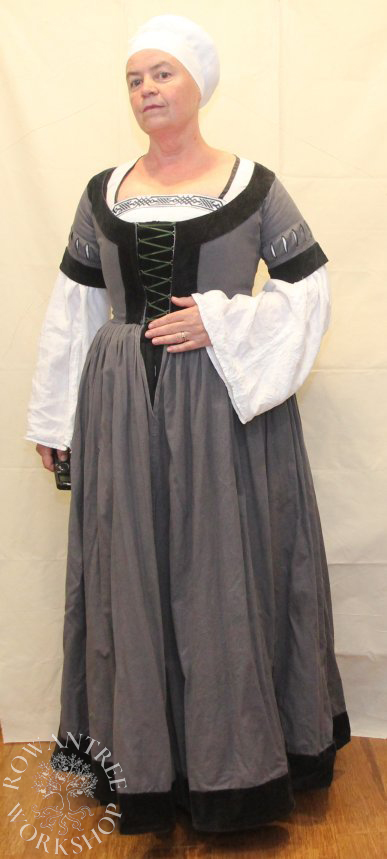Yet another early 16th century middle class German woman’s gown, in grey with black guarding.
With much of my early 16th century German wardrobe now a bit too small, it was time to make a new Rock or two. Having already made Burgher gowns in several common colours, I wanted something different.
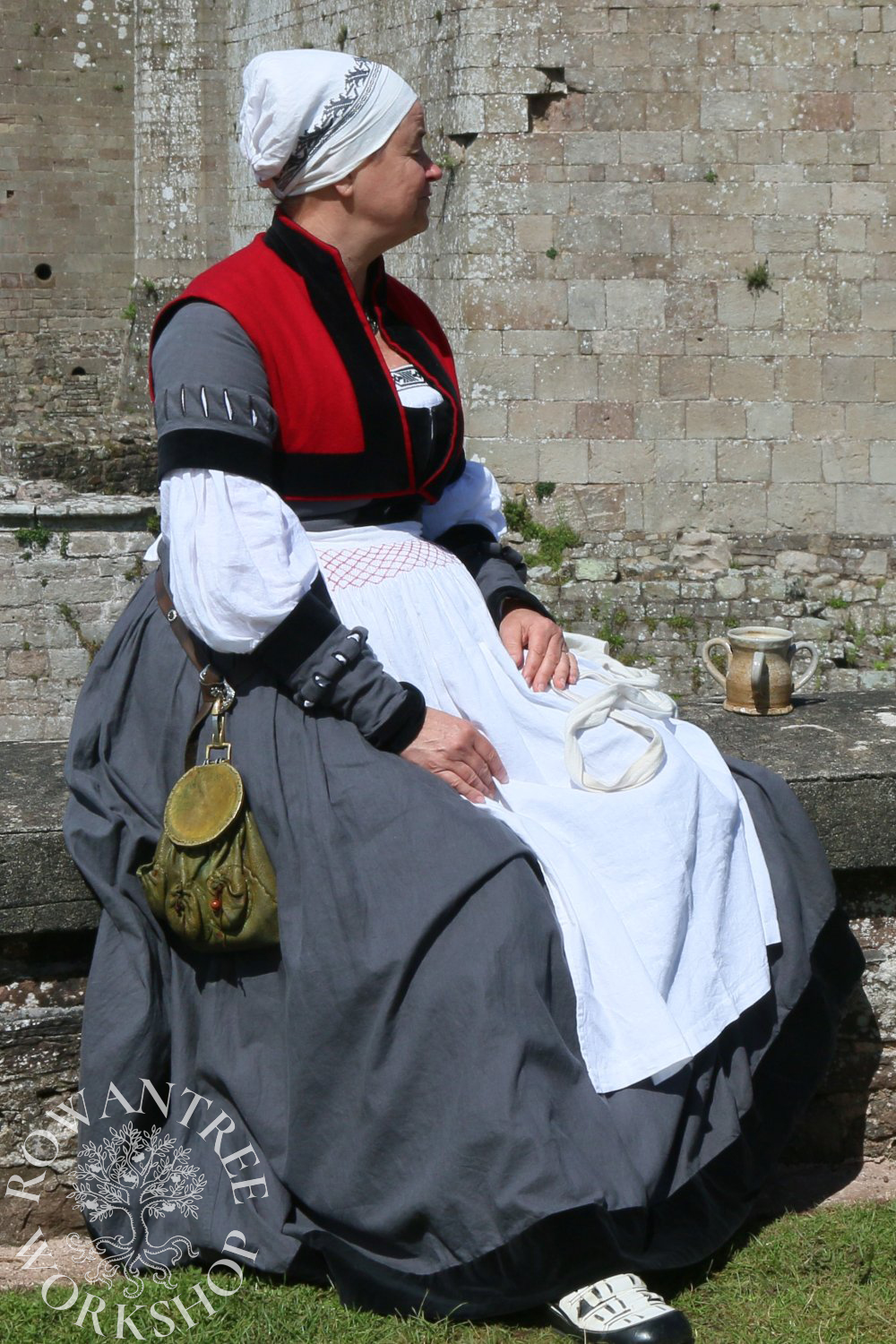
Research & Design
This gown is not a copy of a specific artwork, but was inspired by several woodcuts from The German Single Leaf Woodcut 1500-1550 (Geisberg 1974), including the Allegory of the Wise Woman. The zig-zag hem decoration on the underskirt is seen on both high class and low class clothing, such as this woodcut of a seamstress by Erhard Schoen.
Grey is not a common colour for gowns at this time, but there are some examples of middle class women wearing grey with black guards, including this painting by Jörg Breu the Elder.

Source: Wikipedia

Source: Giesberg Single Leaf Woodcut
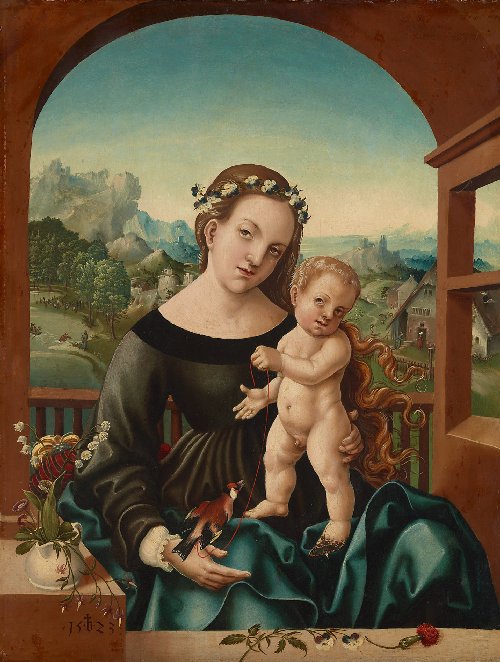
Source: Wikimedia
I found some medium weight, densely woven linen in a nice dark grey, which would look good – and hide the inevitable camping stains.
Construction
The bodice was based on the the Pink linen, with raglan cut sleeves – I really liked the fit of that bodice, although I needed to re-cut for my larger size.

This was to be a practical outfit, so I went for separate lower sleeves, as I had done with the red linen, and made the skirt from three wedge-shaped drops.


I followed the same basic construction approach as for my Pink Linen, but the slashes on the upper and lower sleeves were done as individual bound slashes – a technique I first tried on my Red Linen.
With the outer linen and lining laid flat, I machine sewed around each slit, cut them, slit the top layer apart, pushed it through the slit to the back and then stitched down to form a binding around each slit. Then I sewed up the seam, sewed on the black guard and hand-sewed the lining .

I completed the bodice and lined it, made up the skirt with a single deep guard, hemmed the top and attached it to the bodice with small cartridge pleats. I added a lacing strip and hooks and eyes, as for the Green Linen.
For the under-dress, I made a simple petticoat using straight drops of heavy red linen, cartridge pleated into a simple waistband. For the decoration, I cut triangles of black linen and appliquéd them around the hem edge.

To complete the outfit, I wore a Steuchlein with a solid black edge, my red-embroidered apron and my red wool vest style Goller.

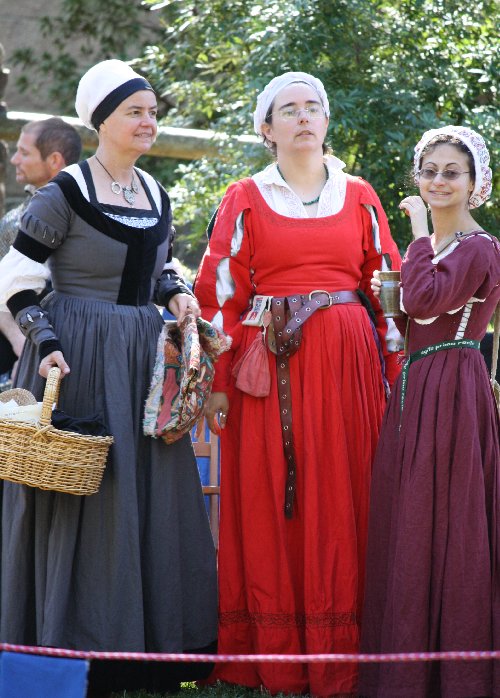
Adaptation
I wore this Rock for many years, until it got too small for me. With no time to make something new, I decided to adapt what I had to make it larger. I still had some of the grey linen (I always keep some scrap for repairs), so something should be possible.
The bodice was easy. There are many images of lower and middle class gowns with open lacing over an underdress or partlet, such as the Allegory of the Wise Woman shown at the top of the page. I removed the old lacing strip and hooks and eyes, replacing them with brass rings sewn inside the edge.
The sleeves were trickier. Since it was a raglan cut, I could not simply replace the sleeves with larger versions. Instead, I removed the black guard, unpicked the underarm seam and inserted a shaped gusset into both the sleeve and bodice. I sewed on a new black guard, which helped to disguise the change.
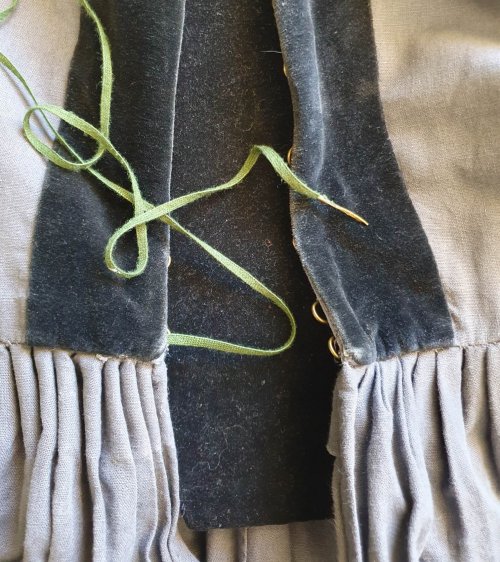
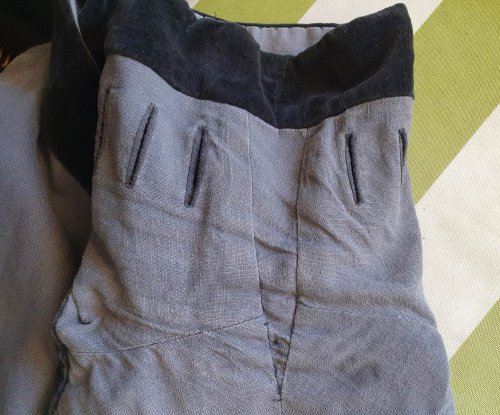
In the revised version, there is of course a gap at the front of the skirt, which is also sometimes seen in woodcuts. This type of adaptation was common to deal with pregnancy – and easy to reverse afterwards. A Schurtzfleck (either working apron or dress version) hides the gap.
The updated version still looks good, although it is starting to wear out. These days, I wear it over a supporting Unterrock.
